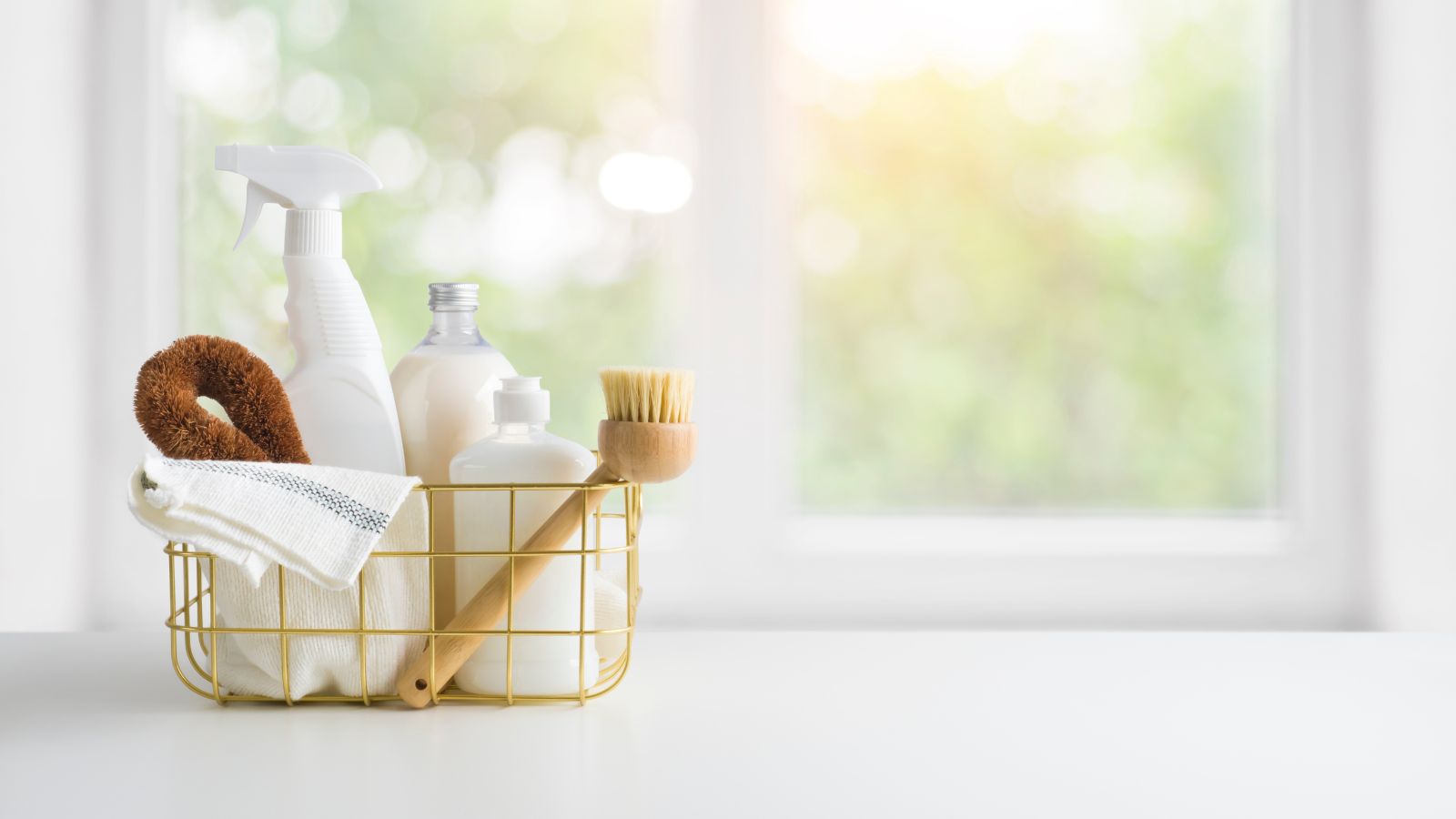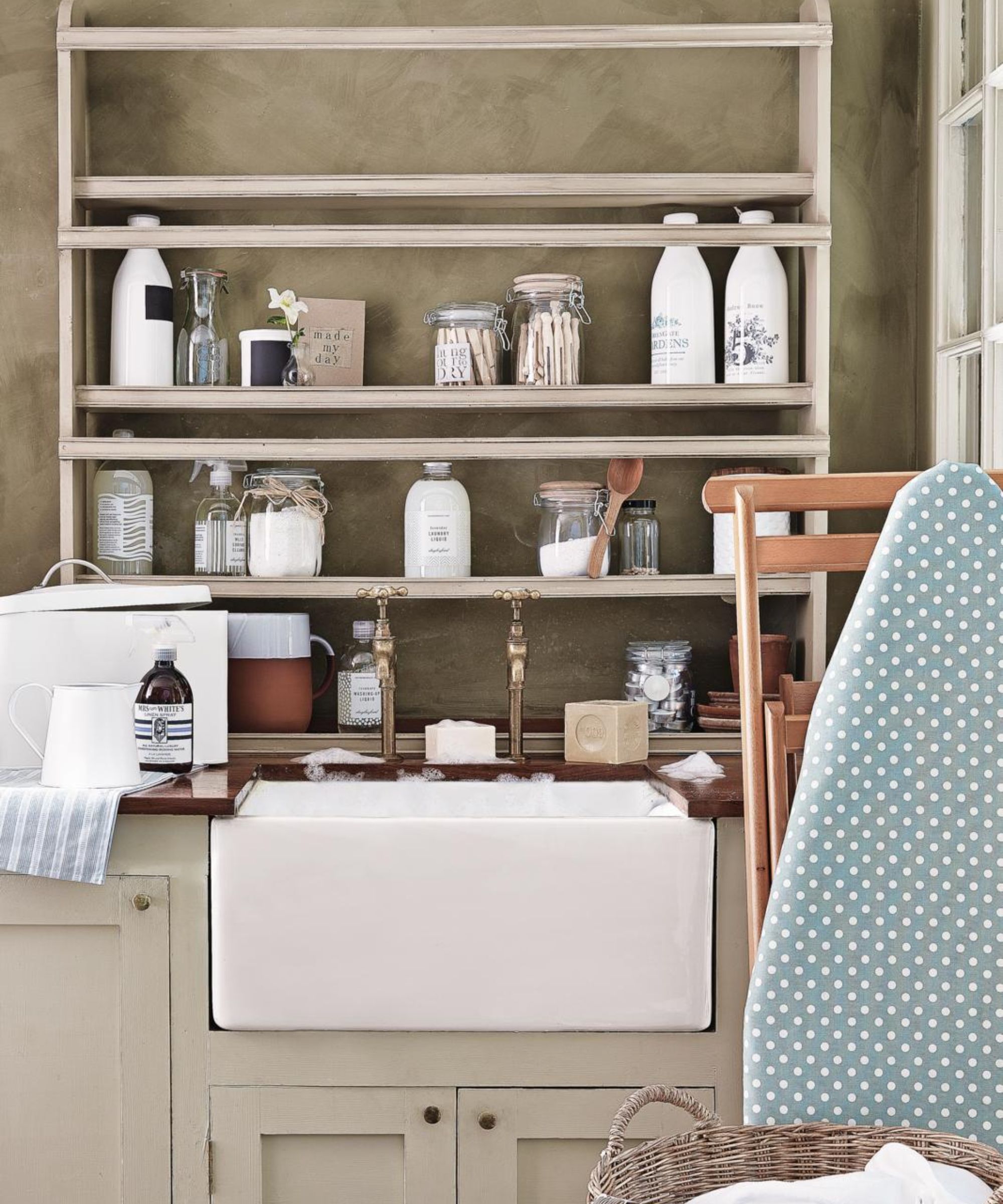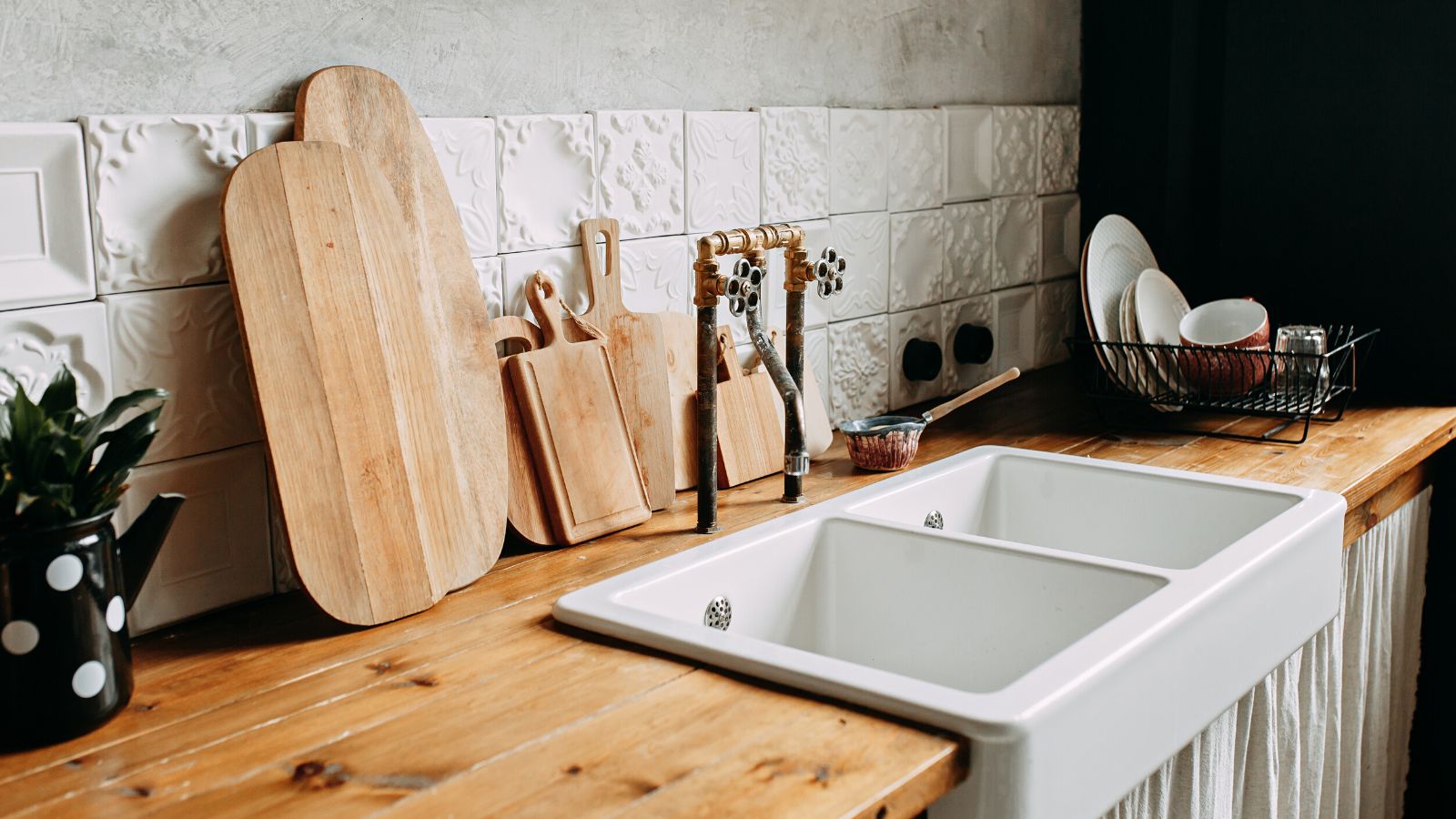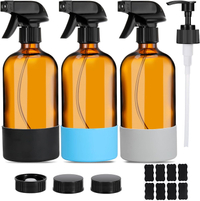5 cleaning tricks to reduce plastic use at home – balance clean with going green
These professional cleaning tips will cut your plastic reliance in half. It's never been easier to embrace a green lifestyle


Let's be honest – cleaning our homes using standard methods and products can use a lot of plastic. From plastic bottles to single-use wipes, it isn't just chemicals that can impact our environment.
The practice of green cleaning shouldn't stop at deciding to cut out bleach in favor of cleaning with vinegar, cleaning experts say. There are plenty of ways to cut single-use plastic from our cleaning routines.
These are the five cleaning tips you can use around your home to help reduce your reliance on plastic and why it makes such a difference.
Cleaning tricks to reduce plastic use at home
Cutting plastic out of your cleaning routine is one of the best ways to be sustainable at home. What’s more, when done right, it can also help you save money at home by reducing your reliance on commercial cleaners.
This is how the professionals balance clean with being green.

1. Use fewer, more practical products
Many of us have a different idea of the perfect cleaning supplies list, and while certain spots of your home will need specialized cleaners (such as cleaning a toilet, or polishing glass), more often than not all you need is an anti-bacterial spray and a degreaser.
‘More isn’t more when it comes to your cleaning cupboard,’ urges Catherine Green, Smol’s sustainable cleaning guru. ‘Despite what some big brands would have you believe, one great all-rounder can be just as effective as several “specialized” products. And cutting down on the number of products you use is a great way to save on plastic and save yourself some money,’ she shares.
2. Make your own natural cleaners
'If you want to cut out your reliance on pre-packaged cleaning products entirely, then it may be worth considering making your own DIY cleaning solutions,' suggests Alicia Sokolowski, cleaning expert and owner of AspenClean:
‘For a simple all-purpose cleaner, just mix white vinegar and water (1:1 ratio) in a reusable spray bottle – either in glass spray bottles like these from Amazon or rinse and refill reusable containers you already have to minimize single-use plastic packaging.
‘I also like to add drops of essential oil (like tea tree, lavender, or lemon) for a pleasant scent.’
Glass Bottles with Labels | View at Amazon
These glass bottles are perfect for making your own cleaning solutions. They're even labeled and color-coded so they won't get mixed up.

Alicia is the President and Co-CEO at AspenClean. AspenClean provides all-natural, chemical-free cleaning services that have revolutionized the cleaning industry and changed the way people clean their homes. It was the first detergent to be certified by the EWG. With over 17 years of experience, Alicia specializes in creating a healthier, green alternative to chemical-based cleaning products and services.
3. Opt for concentrated cleaners and dilute them in glass bottles
'If you still like the peace of mind that comes with a pre-formulated cleaner, then opting for a single, large container of a concentrated formula and diluting what you need when you need it in a glass bottle can help to cut plastic use,' points out Catherine Green, sustainable cleaning guru:
‘The single-use packaging that most cleaning products come in has traditionally been produced using virgin plastics – which means every bottle, tub, and non-recyclable plastic 'refill' pouch ever made is still in existence. When it comes to reducing plastic with your cleaning, switching to refillable and recyclable products can make a huge difference as you reduce plastic waste and cut down on the need for plastic used to produce continuous bottles.’
4. Pick natural materials when choosing tools

'It's not just the sprays and liquids you use to clean your home that should be swapped out when picking eco-friendly cleaning products, but the tools you use too,' points out Gabriella Dyson, Solved section editor at Homes & Gardens.
‘Plastic brushes, dusters, mops, and brooms are all liable to break with heavy usage and are tricky to recycle when you replace them,’ she begins. ‘Opting for wooden alternatives is not only the sturdier choice that will last you longer, but they will decompose more easily when replaced.’

Gabriella Dyson is Head of Solved at Homes & Gardens, editing and writing practical advice for homeowners in the process of cleaning, decluttering, or attempting home improvements and DIY projects. Gabriella previously worked on Homebuilding.com, writing features about issues surrounding historic and listed building projects.
5. Swap out sponges for washable alternatives
'Your cleaning sponges probably don't come to mind when you think of reducing plastic, but they are one of the main causes of microplastic pollutants in water and clog up landfills. If you are looking to be more sustainable, switching these out for washable or naturally made sponges and cloths is a simple first step,' suggests sustainable cleaning guru, Catherine Green:
‘When looking to reduce plastic, we often look at the cleaning products we’re using but not always the accessories we clean with. Plastic sponges, dish brushes, and cloths are not just unpleasant for the environment, they can harbor nasty bacteria and fungus.
‘Natural sponges, cloths and loofah scrubbers like the ones available from smol, are all made from plants. They tend to dry far faster than their plastic counterparts, which can also mean far less bacteria.’
FAQs
What are the best ways to reduce plastic at home?
One of the best ways to reduce plastic use at home is to replace single-use plastics such as straws, bottles, and disposable wipes with glass or metal alternatives. When getting rid of these single-use or disposable plastics, be sure to recycle them correctly so that you are not further contributing to landfill.
If cutting out plastic is not possible for your household, then there are ways to remain green with cleaning. 'Opting for trusted companies who produce products in recycled packaging is a great start, as is being sure to wash out old packets and dispose of them correctly to reduce their impact on landfills,' assures Alicia Sokolowski, cleaning expert.
Sign up to the Homes & Gardens newsletter
Design expertise in your inbox – from inspiring decorating ideas and beautiful celebrity homes to practical gardening advice and shopping round-ups.

Chiana has been at Homes & Gardens for two years and is our resident 'queen' of non-toxic living. She spends most of her time producing content for the Solved section of the website, helping readers get the most out of their homes through clever decluttering, cleaning, and tidying tips. She was named one of Fixr's top home improvement journalists in 2024.
-
 5 things people with clean upholstery always do – simple, quick and oh-so-effective
5 things people with clean upholstery always do – simple, quick and oh-so-effectiveEnsure your furnishing looks clean year-round with these expert tips
By Seraphina Di Mizzurati Published
-
 7 native perennials to plant in April – for glorious flowering displays to attract bees, butterflies, and hummingbirds
7 native perennials to plant in April – for glorious flowering displays to attract bees, butterflies, and hummingbirdsDiscover some of the best perennials to plant in April to make your garden a hotspot for wildlife
By Drew Swainston Published
